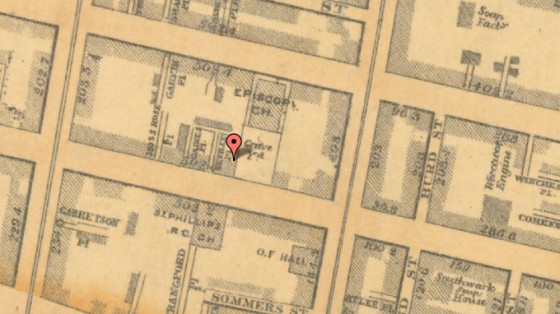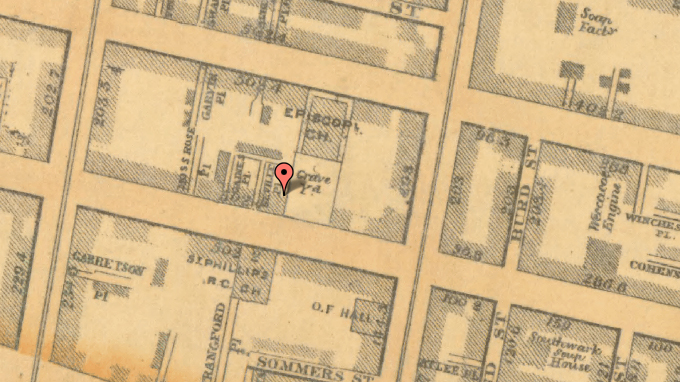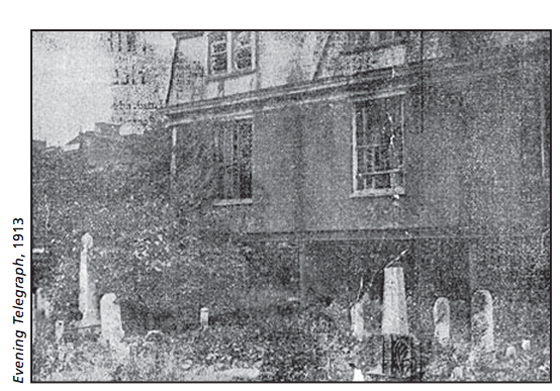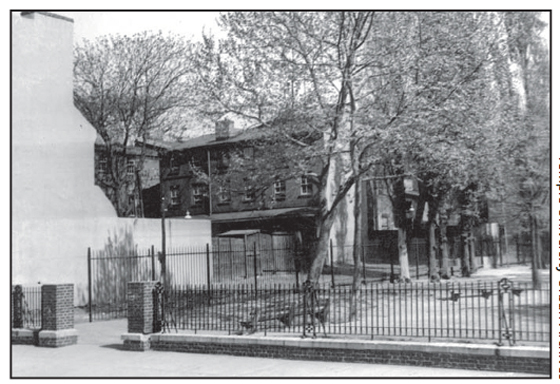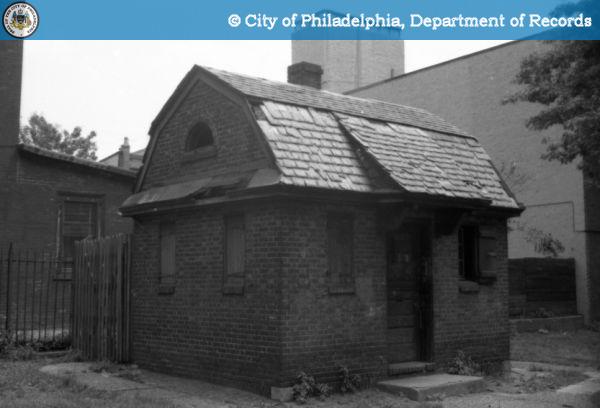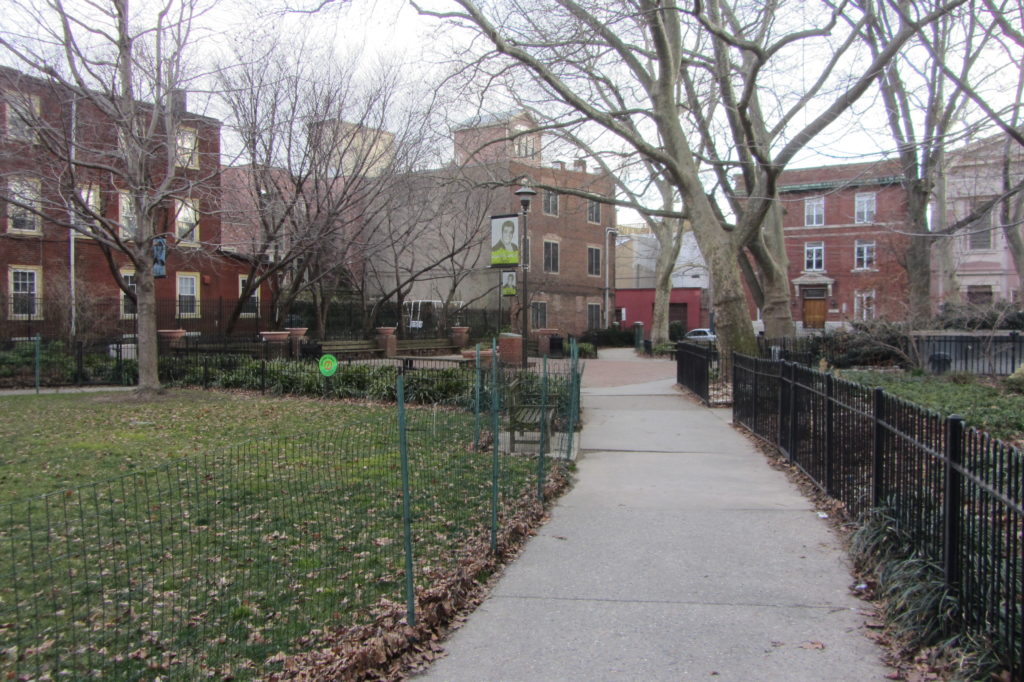Tucked into a quiet pocket of Queen Village, a little jewel of a park pays tribute to Philadelphia’s most famous tenor. Mario Lanza Park, named to honor the star of stage and film, occupies a lot between Catherine and Queen, just west of 2nd Street. Given that Lanza was born in 1921, we can deduce that this was not always Mario Lanza Park. In fact, according to Phila Place, this square became the Trinity Episcopal Church exactly a century before the singer’s birth. The photo below, taken from Samuel L. Smedley’s 1862 Philadelphia Atlas, gives proof of the church’s location.
By the turn of the century, many of the congregants and family members of those interred at Trinity had departed Southwark, making way for a wave of immigrant laborers and artisans. The cemetery became a popular place to throw garbage and by 1908, the church was boarded up. According to Edwin Rivera’s excellent history on the grounds, available at the Queen Village Neighbors Association website, the church was condemned in 1913. Rivera notes that a newspaper article from the time told that “its very rooms, which formerly echoed the tones of the church’s most polished speakers, have sheltered for the last six years only the wild birds or no less wild-looking men who could find no other place to sleep.” The picture below, taken from the Rivera article, shows the cemetery just before its occupants were moved to Mt. Moriah cemetery in West Philly.
By 1918, all existing structures had been razed and the space began its new life as Queen Park. As shown in the image below, taken also from the Rivera article, the park was expanded to include the lot to its west in 1941.
The photo below, taken from the Philadelphia Department of Records, shows the park two decades down the line.
When the beloved Philadelphia born singer Mario Lanza died suddenly from a pulmonary embolism in 1959, efforts began to preserve his legacy. This would include the rededication of Queen Park as Mario Lanza Park in 1967. The image below, taken from the Mario Lanza Institute, shows the renaming ceremony.
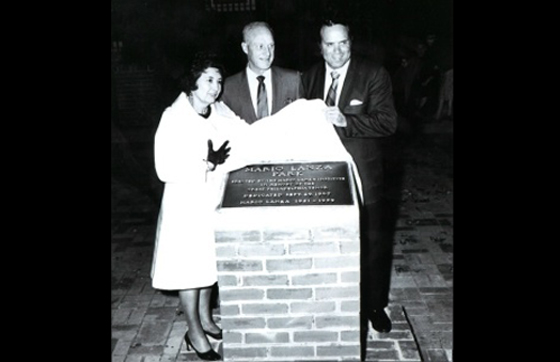
Maria Lanza Cocozza, Nick Petrella, President of the Mario Lanza Institute, and Council Pres. Paul d'Ortona in 1967
Of course, as is sometimes the penchant of Philadelphians, we once again turned the space into a garbage heap over the ensuing 20 years. It was only after a revitalization effort in 1988 that the park achieved its present beauty. Today, outfitted with a brick patio, benches, copious vegetation and a widely used dog run, the park is a fittingly likeable monument to its namesake.
–David Tomar

